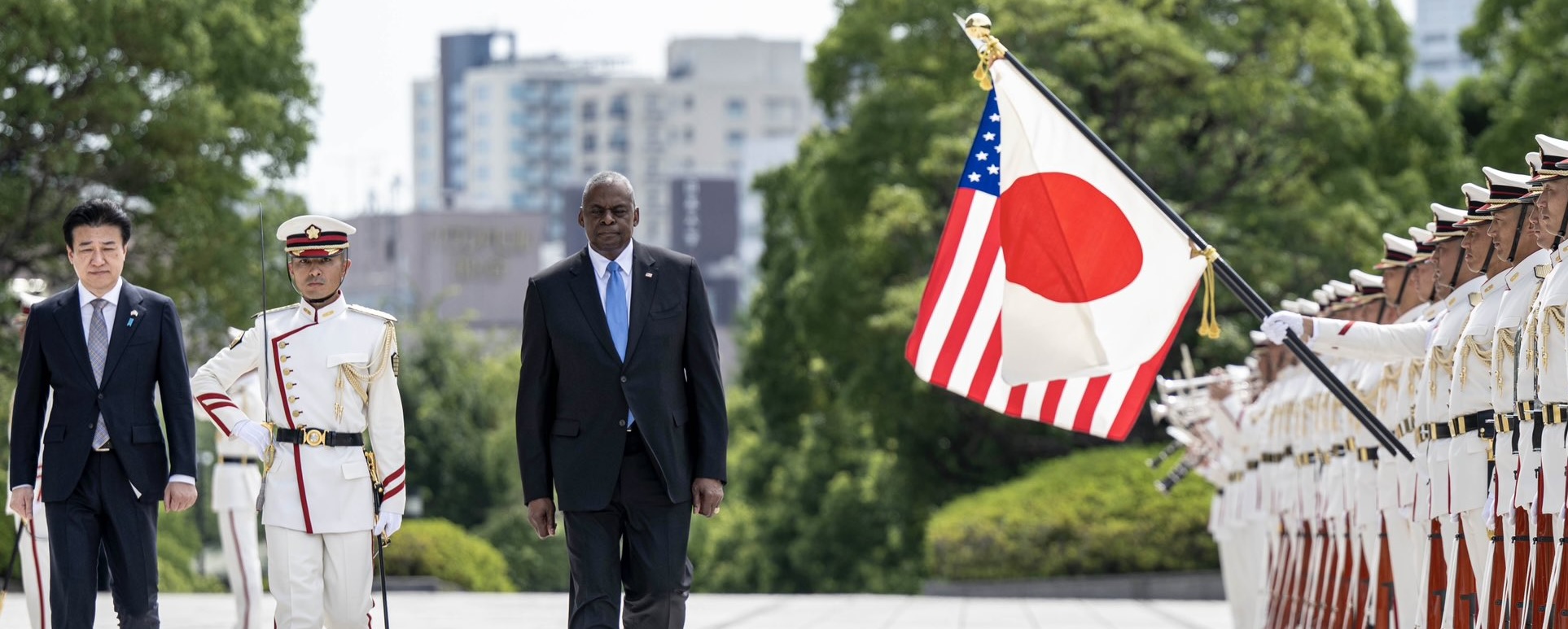Already a subscriber? Make sure to log into your account before viewing this content. You can access your account by hitting the “login” button on the top right corner. Still unable to see the content after signing in? Make sure your card on file is up-to-date.
The United States has unveiled plans to restructure its military command and significantly increase weapons production in Japan, aiming to address the escalating tensions with China.
What’s the deal: Reports indicate that the United States will appoint a four-star general to lead US forces in Japan, a move designed to improve coordination with the Japanese Self-Defense Forces. Alongside this command restructuring, the US will boost joint military exercises and training with Japan to enhance readiness. Additionally, the US is backing Japan’s efforts to establish a unified command for its Self-Defense Forces by March 2025, which will centralize control over air, maritime, and ground operations.

What else to expect: According to the Pentagon, the United States and Japan will boost defense industry collaboration by co-producing military equipment and munitions, including Advanced Medium-Range Air-to-Air Missiles. They will also strengthen alliances with regional partners like South Korea and Australia and enhance engagement with allies in Southeast Asia and the Euro-Atlantic region.
What the US is saying: In a statement, US Secretary of Defense Lloyd Austin said, “The United States will upgrade the US Forces Japan to a joint force headquarters with expanded missions and operational responsibilities. This will be the most significant change to US Forces Japan since its creation and one of the strongest improvements in our military ties with Japan in 70 years.”
How China’s media is reacting: Although the US and Japan’s announcement did not explicitly mention China as the reason for the new measures, China’s state-controlled media condemned the plans.

China’s Global Times published an article accompanied by an illustration criticizing the new US-Japan plans. The article claimed, “The move doubles down on the US’ intention of using Japan as an outpost in the Asia-Pacific region to boost its nuclear deterrence to contain countries such as China and elevate the role of the Japan Self-Defense Forces in the US-Japan military alliance.” It also warned, this will put Tokyo in the front line of a counterattack from other countries, including a nuclear conflict,” and suggested that “the enhanced US-Japan alliance will likely provoke a new round of arms race in tactical nuclear weapons in the region.”






